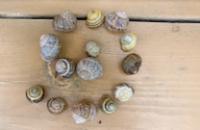
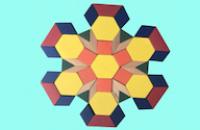
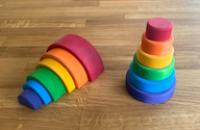
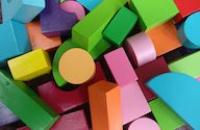
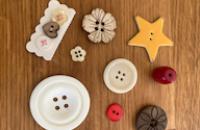
Children often enjoy going outside to play, discover and build, whatever the weather, so wellies might be needed!
Adults could provide suitable shelving for children's wellies (see picture below).
The Activity
Ask children to fetch a particular pair of wellies from the shelf, using just positional language. You can also ask children to put them away afterwards. There will be other contexts in your setting in which you could focus on positional language in a similar way.
Encouraging mathematical thinking and reasoning:
Describing
Where are your wellies? (Encourage children to use positional language, not simply point!)
Where do your wellies 'live'?
Reasoning
Encourage children to follow instructions which use positional language, e.g.:
Please can you put your wellies on the top shelf.
I think your wellies are on the shelf below the basket of dice.
Opening Out
Provide situations where there are two prepositions to describe the wellies' locations (or location of other objects in the setting), for example, "My wellies go on the middle shelf. They go next to Anya's, below the plant."
Recording
Will you tell me where the wellies are so that I can write it down to go with the picture we've got?
The Mathematical Journey
Geometric skills:
- being able to say where something is, relative to something else
- getting used to positional language including words such as up, down, over, under, into, out of, beside, next to, away from, across, between, behind, in front of, at the back, through, top, bottom, inside, outside and upside down
- being able to follow instructions for putting a tray, box, basket ... away on a particular shelf.
Development and Variation
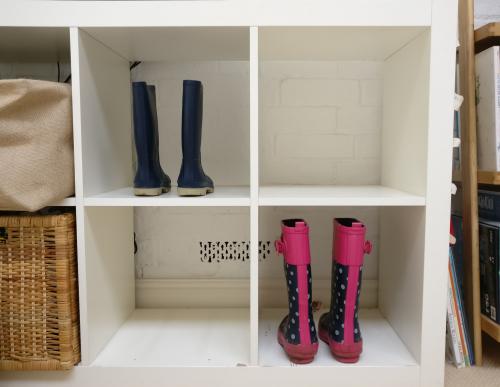
Try to use every available opportunity to help children respond to, and use, prepositions. In the course of a day, some situations may arise naturally, such as when children line up or tidy up. Listen out for children who describe the location of objects clearly without resorting to gesticulation!
You could include the children in creating name labels for the shelves which may make it easier to recognise which space is theirs.
Other NRICH Early Years activities offering opportunities to develop positional language include: Tidying, Incey Wincey, Building Towers, Packing, Long Creatures.
Resources
Storage units.
Items to store! (In this case, wellies.)
Download a PDF of this resource.

